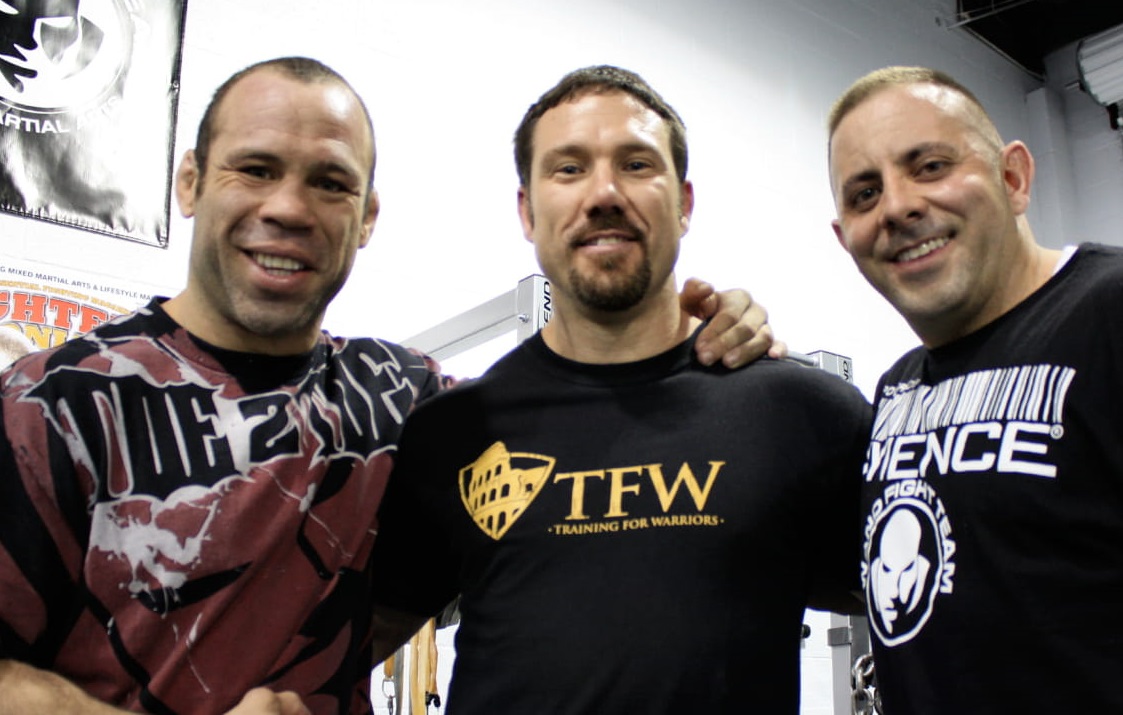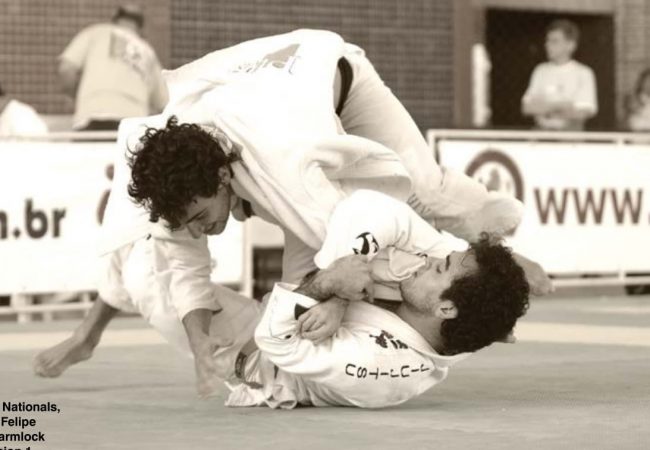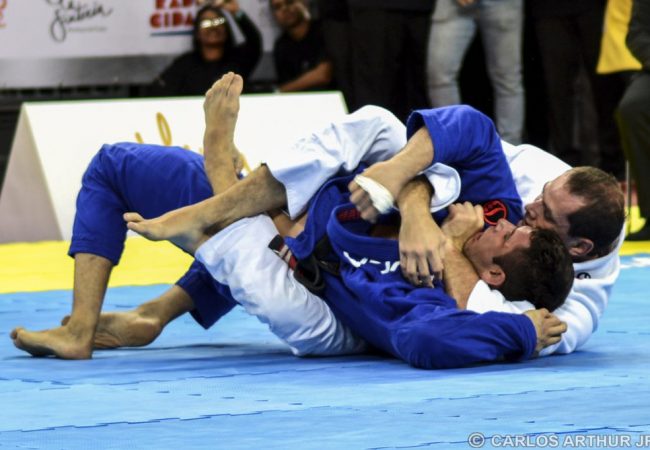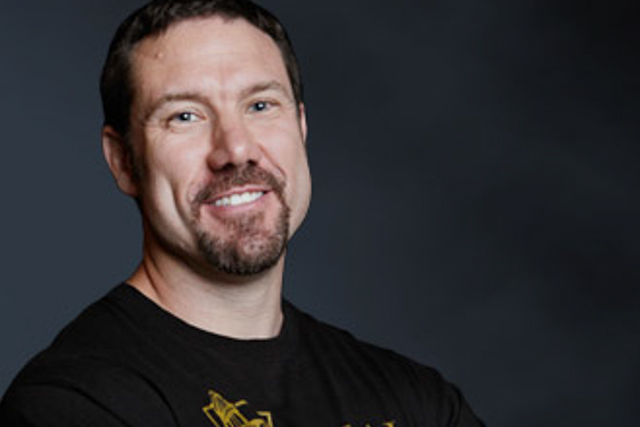[First published in 2009. Part of the Training for Warriors series, by Martin Rooney*]

“Never measure the height of a mountain until you have reached the top. Then you will see how low it was.” Dag Hammarskjold, Sweden diplomat
Wanderlei Silva has always been one of my favorite fighters. I had the luxury to attend a few of his training sessions in Japan at the Pride FC events and I was as impressed by his work ethic and intensity both inside and outside the ring. One could be a fan just because of his explosive knockouts or his never-say-die attitude during his fights, but I was always more inspired at what I saw of this legendary fighter outside the ring. Wanderlei is not only a rare breed of fighter that loves to fight, he also has used his fighting to improve the lives of others. That, as I have stated in previous articles, is the true measure of a martial artist. From the way he has treated his fans in Japan and the US as well as the underprivileged children of Brazil, the man has given back in kindness what he has taken in ferocity.
Although we had dialog via email over the years (Wanderlei actually gave me a generous testimonial for my first book), I had never “officially” met him. My first meeting would be a result of doing “the right thing” for people in the fight game. Wanderlei’s current wrestling coach, Nik Fekete, is an athlete I was a physical therapist for when he was in high school. Nik and I stayed in touch through his college years and onto his Olympic quest. Once the Beijing Games were over, Nik began to study MMA and moved to Las Vegas, where he befriended Wanderlei. This relationship led to our meeting and is further proof that it always pays to treat people with respect because you never know who or which someone might help you out.I showed up at Wanderlei’s Fight Club relatively unannounced with Nik on a Friday night. The facility was amazing. Complete with training mats, a full weight room and octagon, it was a fantastic training spot for MMA.
A number of fighters including UFC vets Mike Whitehead and Kit Cope were just finishing a training session and Wanderlei’s trainer Rafael Alejarra came over to meet us. For those not familiar with Alejarra, he is a very progressive performance coach that has been by Wanderlei’s side for the last number of years. If you have seen his training televised on either UFC Countdowns or the Ultimate Fighter Season in which he trained one of the teams, you will remember his brutal workouts and unique training techniques. Alejarra and I discussed training methodology for hours and he was not only knowledgeable, but had what I call “training wisdom.” I believe that knowledge only becomes wisdom after you have put years of action behind that knowledge. Alejarra had both the knowledge (two degrees in the field) and the years of practice to back up what he was doing.Although Wanderlei was out of town that night, Alejarra promised he would be there the next day and when I returned, he was true to his word.
Wanderlei not only impressed me with his warm reception, but also with his English. It was great to hear he was a fan of GRACIEMAG, and I had the privilege of watching an entire training session, getting to talk philosophy and I even got to stretch Wanderlei out. During the training session, Alejarra and I discussed our training principles. I saw firsthand that Alejarra practiced with Wanderlei what he preached. Sound nutrition with Wanderlei was evidenced by his immediate post-workout shake. Attention to recovery and rejuvenation was paid with his ice baths, stretching and massage.
Although the latter two examples happened at the end of the training, the actual physical training was what interested me most not just because of what it was, but also where it was happening.Within Wanderlei’s magnificent training facility, in addition to the traditional mats, weights and equipment, there was also a special “altitude” room complete with a treadmill and training floor. Here I talked with Wanderlei while he ran at 9,000 feet above sea level all in the comfort of his own gym (visit youtube.com and type in “TFW Wanderlei Silva Fight Club” to see the video in action). The feat was impressive and it forced me to take a deeper look into this form of training that was once confined to boxers and cyclists living in the mountains for weeks before an event.
“Tall men come down to my height when I hit ’em in the body.”
Jack Dempsey, boxing champion
What is altitude training?This form of training used to involve living above sea level in a reduced oxygen environment (due to increased barometric pressure) to increase strength and endurance for a competition once the athlete returned to sea level. The challenge with this classic form of training was that high altitude training areas were difficult to find and due to the stress of working out in oxygen deprived air, workouts were usually diminished, which could actually hurt performance. Another obstacle with this classic form of “hypoxic” training was that you had to stay up at altitude for weeks at a time just to reap some of the potential benefits. In the 1990’s, technology that could reduce the oxygen an athlete could breathe (while keeping barometric pressure the same) either by using a mask or training tent were created.
This began the current craze of altitude training that can be accomplished without the difficulties of traveling to or living at higher altitude areas for long periods of time. What are the benefits of altitude training?Once the new technology was established, this led to an increase in research behind this form of training. According to many of these studies, the potential benefits of reduced oxygen training include: increased endurance, prolonged speed, enhanced strength and power during athletic events, and an improvement in recoverability post-exercise.
What are the physiological mechanisms behind the benefits? Once the potential benefits are understood, I believe it is also important to understand the reasons why these benefits actually occur. Better understanding of the science behind your training will, in my mind, always lead to greater “buy-in” and increased results.Our body is an amazingly adaptive organism. Training puts stress on our bodies, and our body finds different ways of overcoming that stress. Placing our bodies in a reduced oxygen environment creates a high level of stress in which our body must adapt and overcome.Once the body is placed at altitude, a number of changes are documented to occur in the athlete over time.
Studies have proposed that a protein called Hypoxia Inducible Factor (HIF-1) creates a cascade of adaptive responses of the body in an attempt to return back to homeostasis. These are as follows:Increased production of Erythropoietin Hormone (EPO) by the kidneys to increase the Red Blood Cell count to carry more oxygen in the bloodIncreased capillarization (more small blood vessels) to increase oxygen delivery to the musclesIncreased glucose transport (more energy/fuel) to increase power outputIncreased pH regulation (decrease acidity) to improve enduranceIncreased production of mitochondria (the powerhouses of our cells) to improve energy productionIncreased pulmonary oxygen absorption (better lung efficiency) to maintain energy even when oxygen is lowerWhat are the methods of altitude training?Since this is still a relatively new form of training, different forms of altitude training are being studied. For those of us who “live low and train low,” there are three possible combinations of training with which we could experiment with by adding a reduced oxygen environment to our program:
Live high – train high
This is the classic method of living and training at high altitude. Although this style has been used successfully in the past, the obstacles of time, location and money described in this article are apparent.
Live high – train low
This new training method involves “living” in an altitude tent, chamber, or room for over 12-16 hours per day for weeks and then coming out to train hard at regular sea level. This way, the athlete achieves the benefits of increased endurance, speed and strength yet can avoid poor workouts that occur with reduced oxygen.
Live low – train high
This style of training involves working in a reduced oxygen environment while resting and living normally at sea level. The thought behind this technique is to create a more difficult training situation for the athlete and get the body used to working in an oxygen-deprived state.
What are the current ways to altitude-train?Although you may not have the room for an altitude room like Wanderlei, there is now more-affordable technology that can give you the opportunity to experiment with this form of training. This technology involves training or sleeping with a mask on that delivers air with reduced levels of oxygen. A number of my athletes have experimented with this form of training, in particular a multiple-time Olympian who was slightly anemic.
He used the Altitude Trainer from Hypoxico and he believed that this technology definitely helped him to recently make his Olympic team for the third time in Beijing. When I was in Japan, I learned the ancient Samurai maxim, “Beware of the man who cannot take care of the little things in life.” When I was in Las Vegas, I learned that Wanderlei Silva may actually be a modern day Samurai. This was apparent not just because of his discipline, but because of his ability to leave no stone unturned in his training. I would like to thank Wanderlei and Alejarra for their time and the important lesson that there is always something new to learn if you are just willing to keep an open mind. They proved to me once again what the famous speaker Zig Ziglar was talking about when he said, “Your attitude, not your aptitude will eventually determine your altitude.” Now get to work!
* Martin Rooney is the founder of the Training for Warriors system and has trained champion fighters for the UFC, Pride, ADCC and Olympics. His TFW fitness program is used in over 175 facilities in 25 countries around the world. Information about TFW certifications at trainingforwarriors.com.





